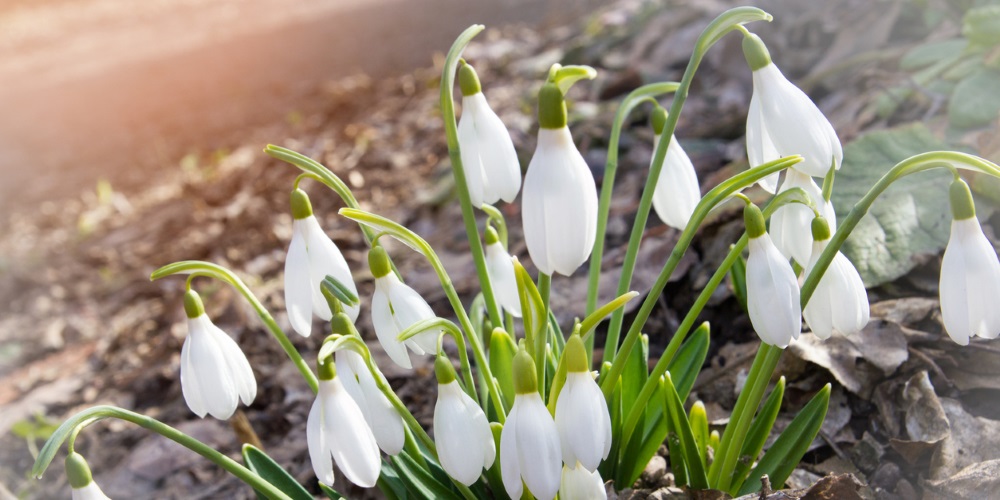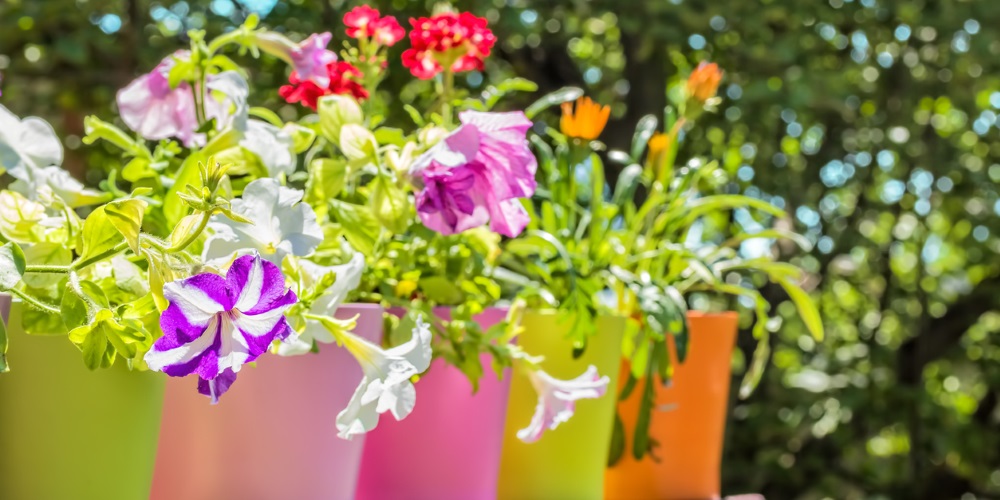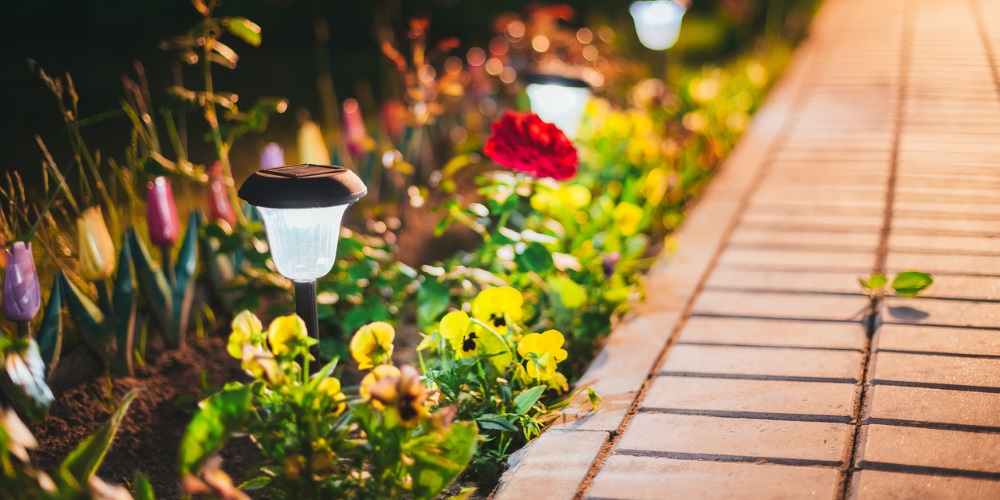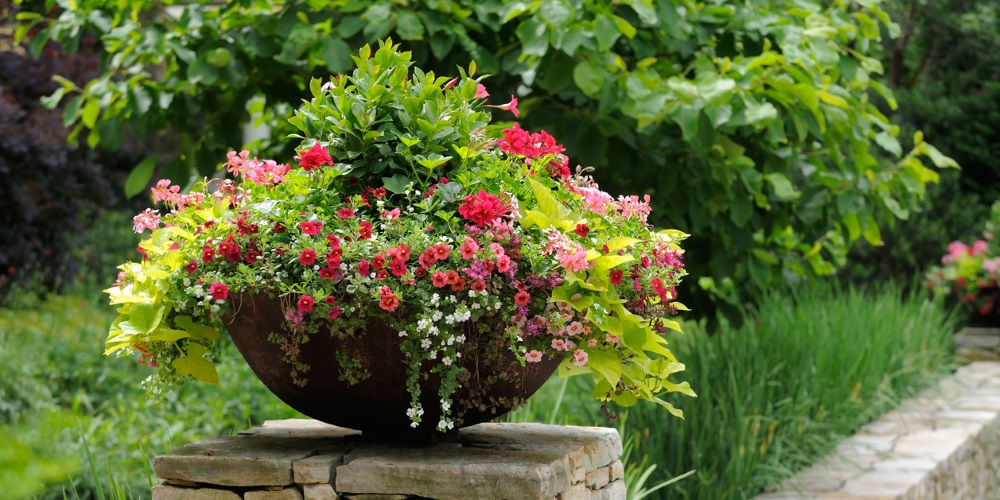
Bi-fold doors are a great way of showcasing a beautiful garden, allowing us to appreciate the view from both inside and outside the home. As the early signs of spring appear, we’re keen for our gardens—and our lush outside views—to resume their full summer glory as soon as possible.
Although we can’t rush the course of nature, there are certain measures we can take to ensure our gardens are looking bright and inviting from the very first sighting of sunshine. To find out more, we turned to the experts for some top tips and advice.
 Jane Hicks Garden designer |  Steve Collier Managing director |  Arthur Smith Lighting expert |  Gilly Craft Interior designer |
It’s all in the planning
Bi-fold doors mean your garden is on view throughout the whole year, come rain, shine or snow. Clever planning makes it possible to maintain year-round colour and interest, whatever the weather.
- A well-designed terrace is one which fits in with the style and colour scheme of the house. This especially applies to properties featuring bi-fold doors as it’s very important to create a seamless link between the indoors and the outdoor space. Jane Hicks—garden designer
- Make sure that the planting is right for the season. A garden architect/designer can do a plan that has plants that will flower at certain times of the year, giving year-round interest. Gilly Craft—interior designer
- In the autumn, fill pots with winter flowering shrubs and early blooming spring bulbs in preparation for the seasons ahead.
- Nothing looks bleaker than a large paved area covered in leaves and rain in the winter months, so consider reducing paving or adding pots of winter-resistant plants. Steve Reading—architect
- Evergreens are great for adding structure and colour during summer and then colour and a focal point in winter when other plants are dormant. Depending on which ones you choose, they can be grouped together and clipped neatly, trained into interesting topiary or into a multi-stemmed large shrub. Evergreens that flower in the winter months include Sarcococca (Christmas box) whose flowers have a wonderful scent, Viburnum tinus and Garrya elliptica ‘James Roof’. Jane Hicks

Spring-clean your outside space
During the winter, it’s inevitable that plants will die away, fallen leaves will accumulate and the overall vista will become bleaker. Streamlining your outdoor space will help refine your view and make way for freshly sprouting spring buds.
- Keeping a garden tidy is so important. Cut back anything that’s past its best or dead and rake up and dispose of any leaves. Gilly Craft
- Patio furniture and barbeques covered with tarpaulins look sad and untidy. If you have the room to store them somewhere else during the winter, this will open up your view of the garden from the house. Jane Hicks
- Small bistro tables or neat garden benches are the ideal out-of-season replacement for bulky dining sets during those early days of spring when you may want to sit outside and enjoy the brief spells of sunshine.

Illuminate areas of interest
A great way to highlight certain features of the garden—while detracting from not-so-attractive areas—is to introduce garden lighting.
- By using moveable spike lighting, you get a more flexible way to introduce garden lighting. You can effectively highlight interesting shrubs, trees and foliage in beds—which are still flourishing despite the cold weather—via hidden spike lights among the garden borders. Jane Hicks
- Spotlights or floodlights work well for highlighting an exterior view, as they have a further reach than a standard porch light. If you're looking to illuminate your backyard for safety purposes, go for motion lights, since they will be great at scaring off any intruders or rogue animals that might wander into your garden. Arthur Smith—lighting expert
- You can create a focal point of distinctive trees and plants by uplighting or moonlighting (shining light up from the base of the trunk or down towards the ground). This can be very dramatic on the winter skeleton of a large tree. Jane Hicks

- Solar lighting is inexpensive and readily available in many homeware stores. Decorative string lights, discreet garden spikes, lanterns and spotlights allow you to integrate lighting into different areas of the garden.
- Illuminating pots and planters can look very effective. Boxus—which is evergreen and therefore looks great all year round—can have a striking appearance, especially when pruned into interesting shapes. Gilly Craft
- I’d suggest keeping lighting zoned close to the windows, as distant night views can look spooky. Steve Reading
- Fairy lights can create a magical effect in topiary and recessed uplights set into the edge of a deck or patio can help define the space. Jane Hicks
Get creative with pots and planters
Pots and planters are an inexpensive way of introducing instant bursts of colour—place them tactically around the garden for maximum impact.
- When it comes to pots and planters, think bold! Place pots within garden borders to create focal points or as punctuation points to indicate a change in level—steps—or direction. You could also position one distinctive pot in each corner of a terrace to define the space or arrange a number of pots in groups. Jane Hicks
- Position brightly coloured planters in full view of your bi-folds. Even if they simply contain evergreen shrubs, the pots themselves will give a splash of well‑needed colour.
- Use pots and planters to create points of focus or to accentuate sight lines. Steve Reading
- Fill pots with interesting winter plants that have nicely coloured leaves even when they’re not in flower. Gilly Craft
- Make sure the plants you have in pots are interesting for each season of the year. If not, think about replacing them or under-planting with bulbs or bedding plants. Jane Hicks
- Living walls can provide a striking effect as part of a bi-fold view. Gilly Craft




































